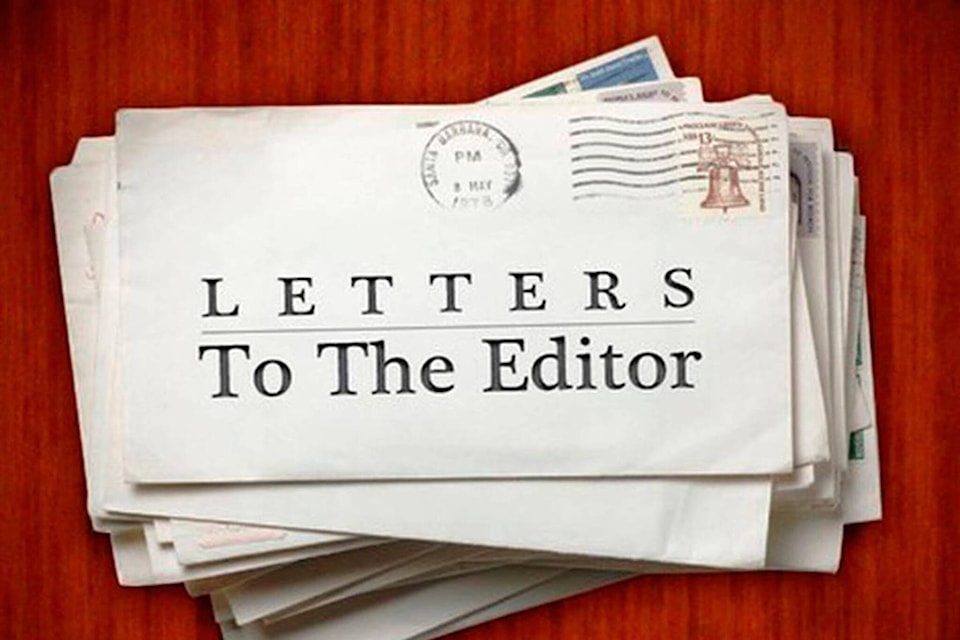To the editor;
On our second National Day for Truth and Reconciliation, I reflected on Canada’s journey towards justice for Indigenous Peoples.
In 1929, the year of my mother’s birth, Canada’s Supreme Court decision that women weren’t persons was reversed.
My mother spent her childhood summers at Wasaga Beach, ON where she recalled the Dardanella Dance Hall with a sign “No Jews.” My mother remembers beaches posted “No Dogs or Jews” in her hometown, Toronto, ON. My father graduated from the University of Toronto medical school in 1949 when university policy capped Jewish medical student enrolment at five percent. My parents’ remembrances illustrate the breadth of systemic racism in Canada.
In 1969 Canada’s Criminal Code was amended to decriminalize homosexuality, a step in the slow, unfinished march towards justice for the LGBTQ community.
In 1982 the Canadian Charter of Rights and Freedoms declared people are to be treated equally no matter their race, national or ethnic origin, colour, or religion. In Canada, the concepts of “multi-culturalism” and “colour-blindness” were promoted. While admirable in intent, neither has fully succeeded. To some extent, both work against themselves by concealing the reality of the lives of the racialized to the non-racialized. Racism, often veiled, persists. In 2021 it leapt from the closet. In London, ON, four Muslim family members standing on a sidewalk were murdered by a man who drove his truck full-speed onto the sidewalk, intentionally crashing into his victims.
Reflecting on Indigenous Peoples, the Kanyen’kehà:ka (Mohawk),originally from what is today upstate New York, were vital British military allies during the fur trade and American War of Independence. Following the British defeat by the Americans, the Kanyen’kehà:ka were forced from their traditional territory and moved to Canada where they were granted land. They continued as British military allies even as their territory was substantially reduced by soulless swindlers. Visit the Kanyen’kehà:ka Six Nations Reserve former residential school and you’ll learn that until it closed, Kanyen’kehà:ka children were threatened with a needle through their tongue if they spoke their native language.
In Thunderbay, ON, it’s common for Indigenous Peoples to have garbage deliberately thrown at them from passing vehicles. In 2017, Barbara Kentner, an Indigenous woman and innocent pedestrian, was killed by a man who threw a trailer hitch at her.
Helen Betty Osborne, an Indigenous high school student living in The Pas, MB was viciously murdered in 1971. It took sixteen years to convict her killer. Ms Osborne is one of countless murdered Indigenous women poorly-served by Canada’s justice system. In 2016, Justin Trudeau’s Liberal government had the courage and humility to order a National Inquiry into the Missing and Murdered Indigenous Women and Girls. The Inquiry’s 2019 report says it “doesn’t mean that Indigenous Peoples waited this long to speak up; it means it took this long for Canada to listen.”
The Inquiry found the cause of suffering and murder of so many Indigenous women to be rooted in multigenerational trauma; marginalization; institutional lack of will; and ignoring the agency and expertise of Indigenous women, girls and 2SLGBTQQIA people.
The National Day for Truth and Reconciliation is a time to listen to the truths, and commit to reconciling past and present wrongs toward Indigenous Peoples.
Robert M. Macrae
Castlegar, B.C., Canada
